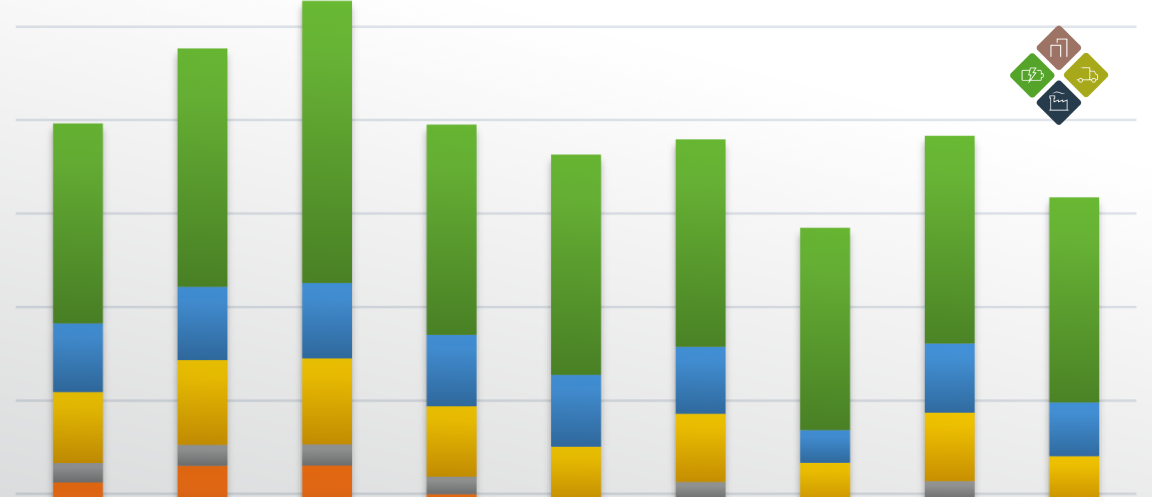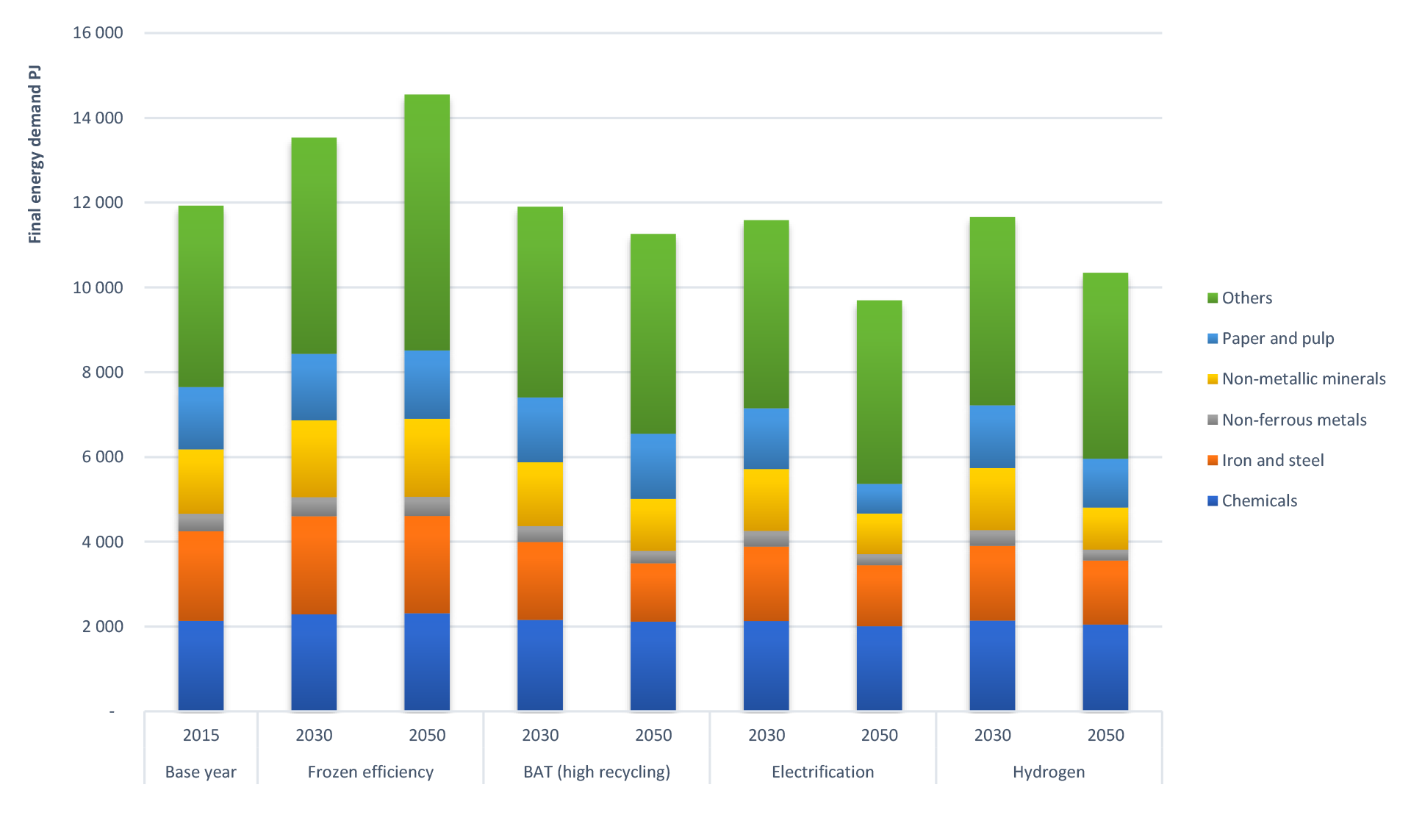
08 Mar Energy efficiency potentials on top of the frozen efficiency scenario
The European Commission has estimated how much energy will be consumed by the EU industrial sector during the 2018-2050 period if current market trends and policies continue. In such a reference scenario, the energy intensity of the industrial sector continues to slightly decrease due to equipment renovation and activity shifts towards higher value added but less energy intensive products. However, insights need to be gained into what extent energy efficiency potentials are already implemented, what energy efficiency potentials remain untapped and what are the associated investment costs. As a following step, it is important to assess alternative future scenarios, able to substantially decrease the final energy demand and/or deeply reduce industrial greenhouse gas emissions. The developed scenarios have varying degrees of technology diffusion rates and varying types of technological innovations to construct different energy demand pathways for the EU industry. The mitigation scenarios investigated are the: Energy efficiency, Electrification and Hydrogen scenarios.
To achieve the EU goals, energy efficiency alone is not sufficient. In 2050, energy efficiency improvements and recycling can reduce the industrial energy demand in the EU industry by 23% when compared to a frozen efficiency scenario.
The aim of the sEEnergies task was to identify the future untapped industrial energy efficiency potential in the EU industry. To understand the impact of structural changes and energy efficiency in the total final energy projections in the reference scenario, the analysis started with constructing a frozen efficiency scenario. The frozen efficiency scenario considers the same structural changes as the reference scenario in European Commission (2016), but with no energy efficiency improvements.
In 2050, the wide adoption of energy efficiency and electrification and/or hydrogen technologies can limit the industrial energy demand in the EU28 by 34% and 29%, respectively when compared to the frozen efficiency scenario.
The objective of this study was to give insights into the energy performance of the industrial sector under three different scenarios (the energy efficiency, electrification, and hydrogen scenarios) that all have as a starting point the same industrial activity as estimated by the European Commission (2016). These results can be of use to other researchers that investigate how the future energy demand can be supplied to the main energy consumers (i.e., industry, transport, buildings). It is also interesting for policy makers, as it shows the important but finite potential for energy efficiency improvement, it identifies the industries with the largest energy savings potentials and the total investments that will be required under the three scenarios.
The results can be used to construct industry specific policies as they determine the untapped energy saving potentials per industrial sector and product, and the degree of cost-effectiveness when comparisons are made to the current energy prices. They can also be used to create strategies on how to meet the industrial energy demand under the scenarios where there is a heavy reliance on hydrogen and/or electricity.
The full analysis can be read in the report on “Energy efficiency potentials on top of the frozen efficiency scenario”, Deliverable 3.6 of sEEnergy, authored by Katerina Kermeli and Wina Crijns-Graus of Utrecht University.
Key words
Industry, energy demand scenarios, energy efficiency, electrification, low-carbon technologies, hydrogen


